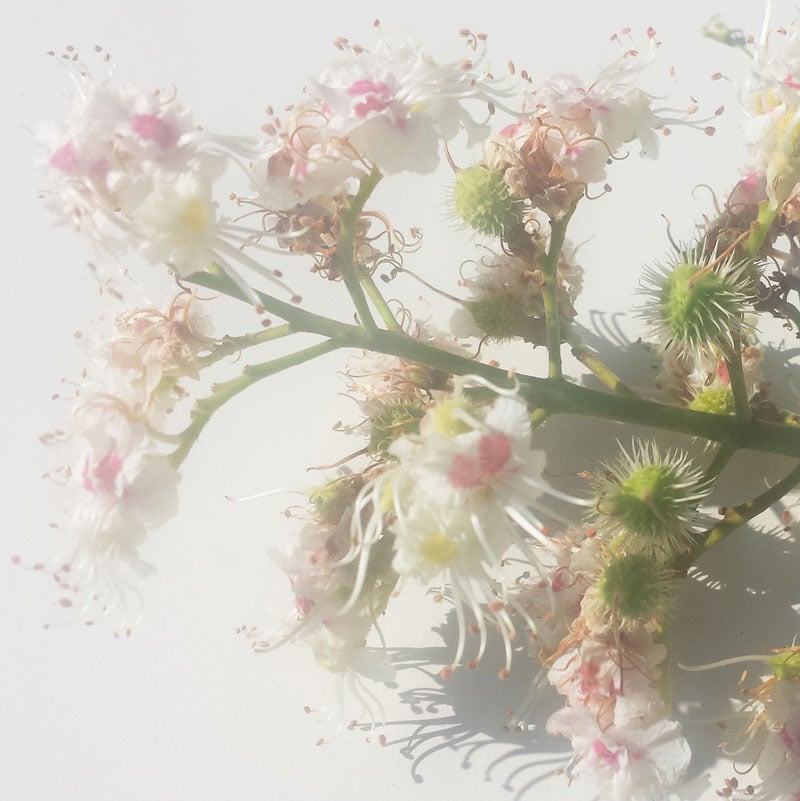
We don't usually think about horse chestnuts - conkers to us Brits - until autumn when children extract those beautiful shiney nuts from their prickly shells.
But horse chestnut trees are actually amazing for kids to observe all year round.
They're the big show offs of the tree world. And have always got a clever trick up their sleeve. Or should that be branch 😉
Which makes them a brilliant tree for a nature journal through the four seasons.
Observing their dramatic changes from winter through spring, summer and autumn is a fun outdoor learning activity informally worked into park trips or as part of a plant science lesson plan for your class or homeschool.
Journaling the tree's changes in notes and drawings or simply on a nature table with preschoolers, helps children see very visually the full plant lifecycle from bud and flower through pollination to the new seed.
In this post I'll show you what to look out for at each stage of the horse chestnut's tree lifecycle.
If you enjoy the post please feel free to share it and do have a look at my other simple nature science posts.
1. Horse Chestnut Tree Buds
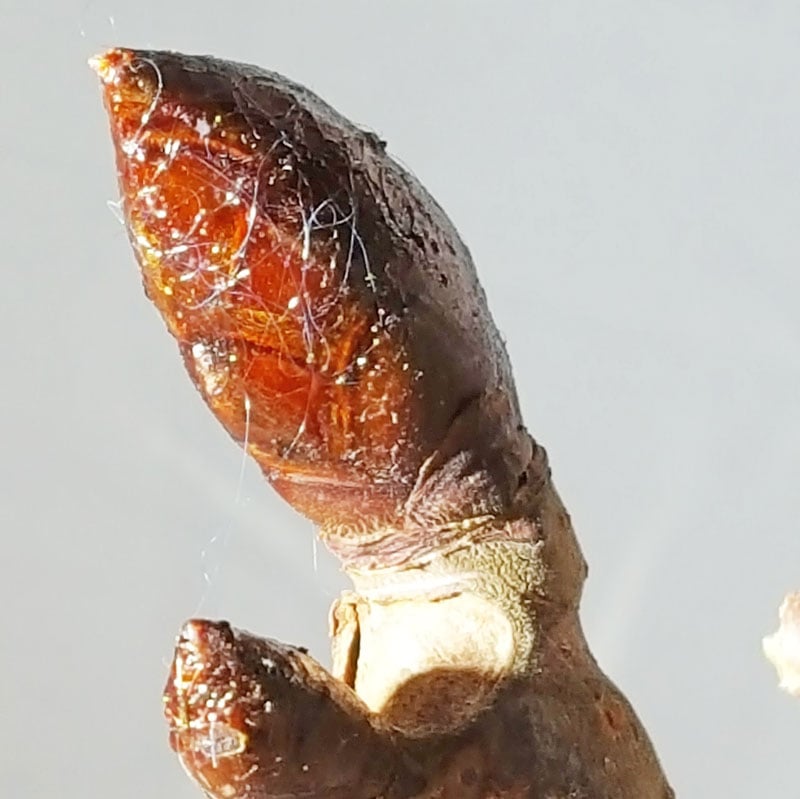
The horse chestnut trees are one of the first trees in bud in late autumn and early winter. And boy, their buds are big!
PLUS they're sticky.
Give them a feel and you'll get gluey resin on your hands. They need to be sticky because they are so big.
Look up closer and you'll see the gluey stuff seems to be holding separate plates together. The plates and glue let the bud grow much bigger without popping open.
2. Opening Chestnut Buds
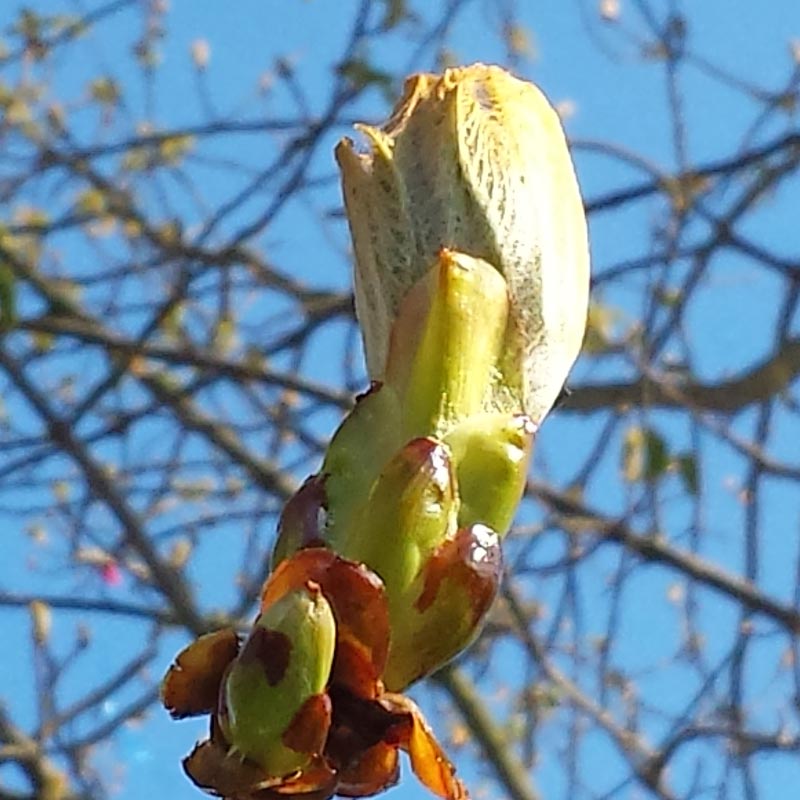
As the sun shines and air warms in early spring, the gluey stuff melts and the plates fall back.
And when the buds start opening, you realise why they needed to be so big.
Inside the bud are both the already large leaves and the structure of the distinctive flower.
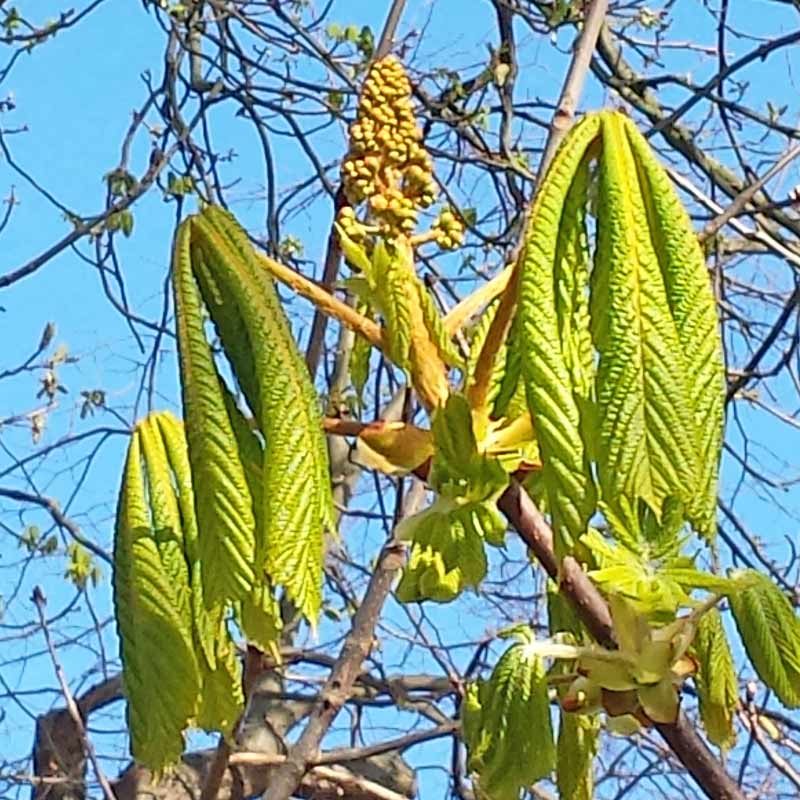
That clever sticky stuff on the bud not only gave these space to grow but also provided a water proof coating against the rain.
How clever is that?
3. Horse Chestnut Blossom
But you know what?
The horse chestnut tree gets cleverer still.
When the blossom emerges - in April in our lovely local London park - from the individual buds on the flower structure, it's white but yellow in the middle.
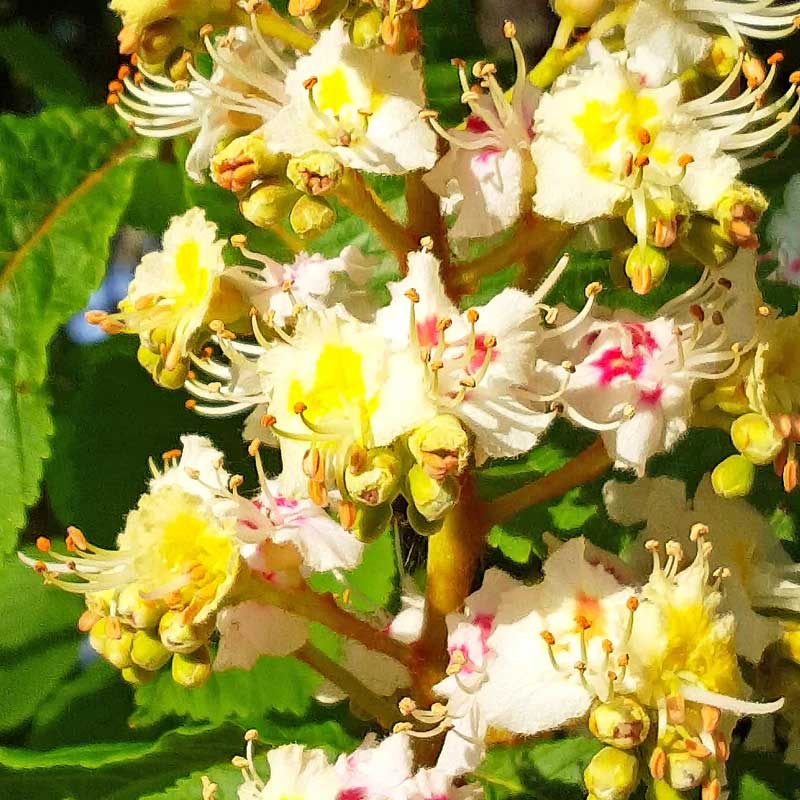
Now as you know, horse chestnut trees are big fellas. So there's an awful lot of blossom the tree wants pollinated by the friendly bees.
To help that happen, the horse chestnut blossom centre turns from yellow to pink once pollinated, so the bees and all their friends don't waste time on already pollinated flowers!
Pretty smart huh?
4. Chestnut Pollination
Now, May is the traditional time for horse chestnut festivals in the UK. This is when the blossom is at it's most magnificent.
With big flowering candles all over the tree.
But if you look closely, you'll see the bees have already done their work. And there are oh so delicate, little conkers growing in the blossom.
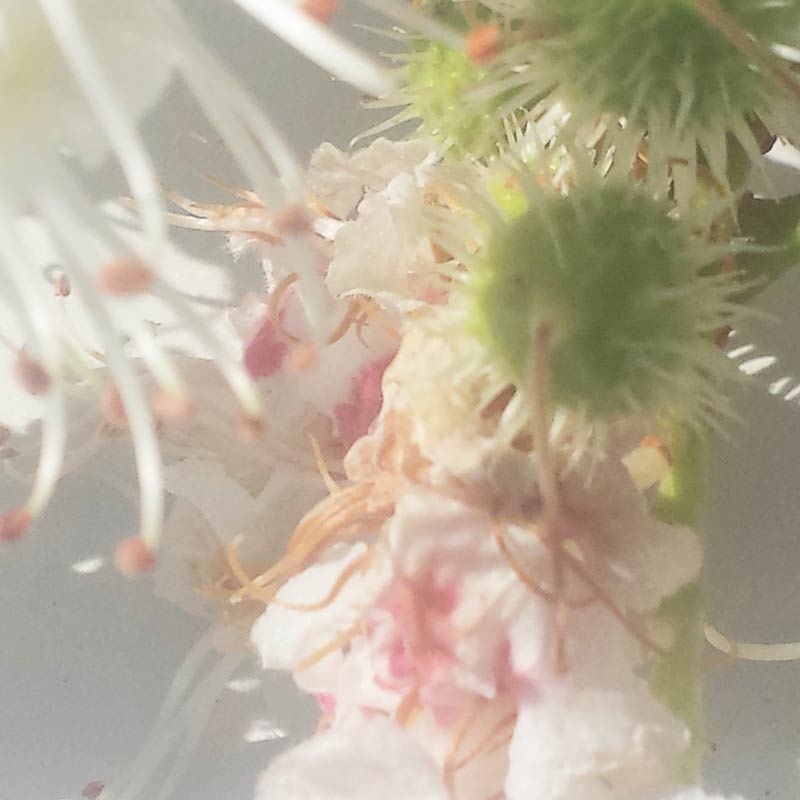
These tiny beauties are lovely on a nature table. And make a beautiful prompt for nature journal sketches and paintings including simple petal paintings and collages.
5. Horse Chestnut Prickles
As soon as those tiny nuts start growing the horse chestnut tree puts up its defences.
And does everything it can to protect them from the weather and predators.
The horse chestnut at this stage - over the summer - is white and creamy and soft inside.
And very yummy for squirrels!
But nothing will grow from it.
So the horse chestnut tree keeps the nut safe until it is ready behind those seriously spikey spikes and a tough as tough skin that even the most persistent squirrel can't get through.
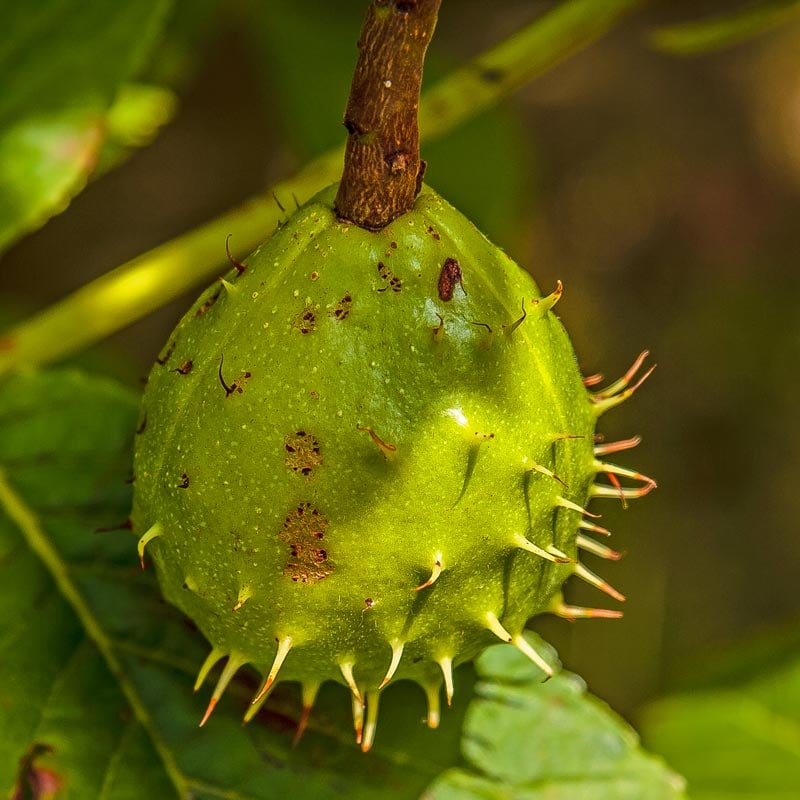
And that shell I promise you, really is tough. I've broken many a nail trying unsuccessfully to open them for an impatient small child.
A fun journal activity at this point in the tree's lifecycle is to compare the horse chestnut's defence strategy with that of the oak tree.
The oak is quite happy for the squirrels and jays it provides habitat for to steal as many acorns as they like.
6. Ripe Horse Chestnuts
But the chestnut tree's super smart defences let the new conker develop safely on the tree for over three months.
The tree's enormous green leaves converting the sun's energy into fuel for that growth. If you want to include leaf drawings or rubbings in your journal, it's best to do them early summer as the leaves deteriorate quickly as the conkers grow.

By autumn, the horse chestnuts are fully grown.
And are finally, their distinctive chestnut brown.
Then and only then, do the horse chestnut prickles soften.
And the horse chestnut shell open, so the horse chestnut can fall to the ground.
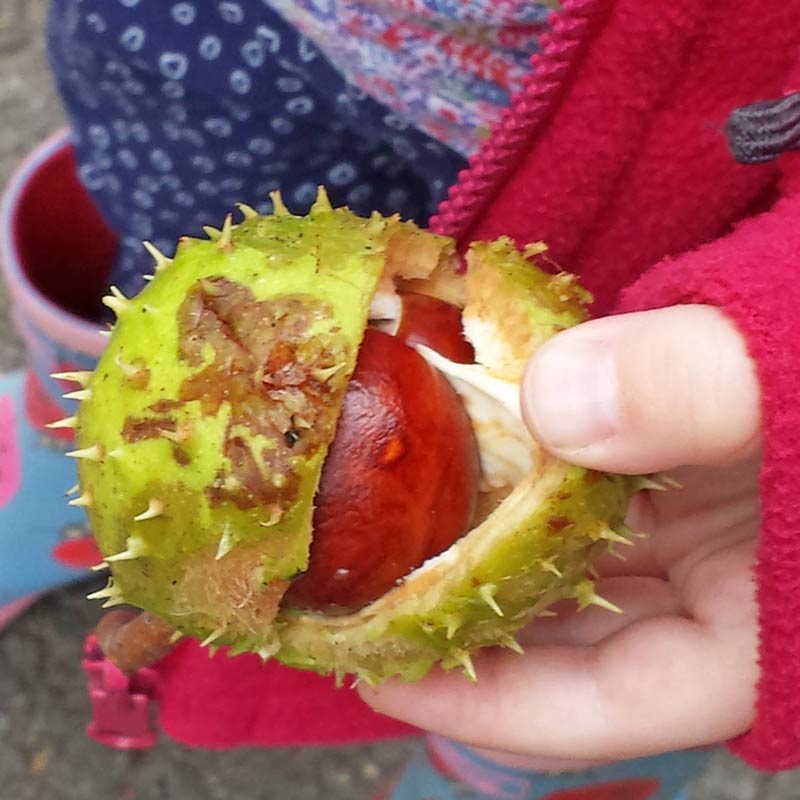
At which point, squirrel actually helps out.
He'll eat some. But scurry off and bury most around the place.
Those he buries and forgets will emerge as new horse chestnut saplings.
And with a bit of luck grow into magnificent new horse chestnut trees.
If, like us, you collect hoards of conkers, do, before squirrel gets his mits on 'em, pop some in a pot.
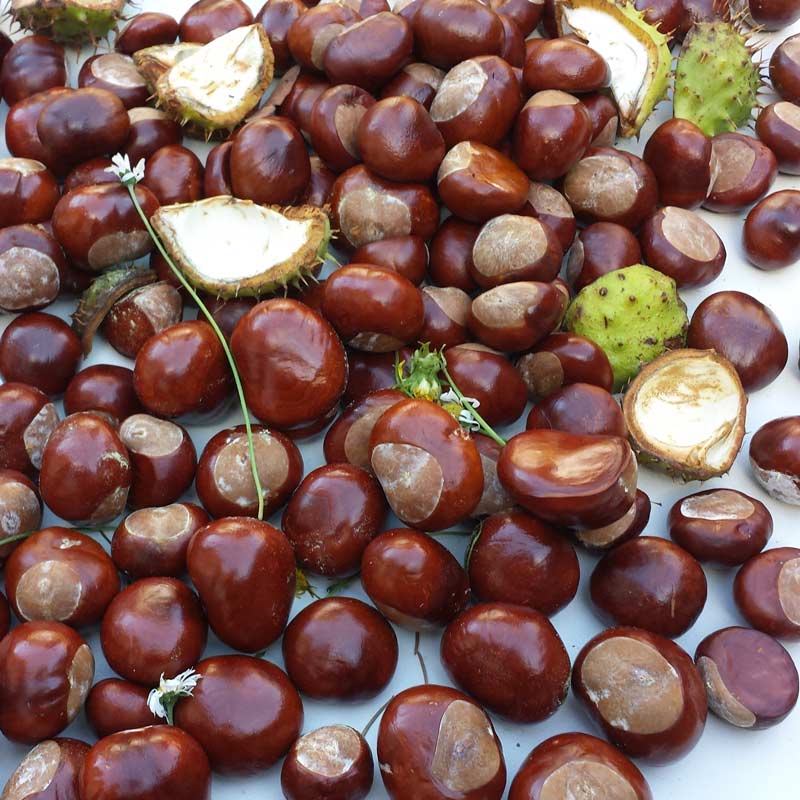
Over the winter, your kids can watch as the horse chestnut germinates and the tree starts to grow.
Although, if your garden is small like ours probably best not to let it grow for too long!!
Do have fun observing all the clever stuff the horse chestnut tree gets up to across the year.
And for more lovely ideas for exploring nature with children check out these:
- Dissecting Daffodils
- The Lifecycle Of Ladybugs
- Observing Baby Goslings
- How To Make Rainbows
- Writing On Tree Bark
They are all simple outdoor activities that encourage children to observe the world around them and are ideal for nature journals.
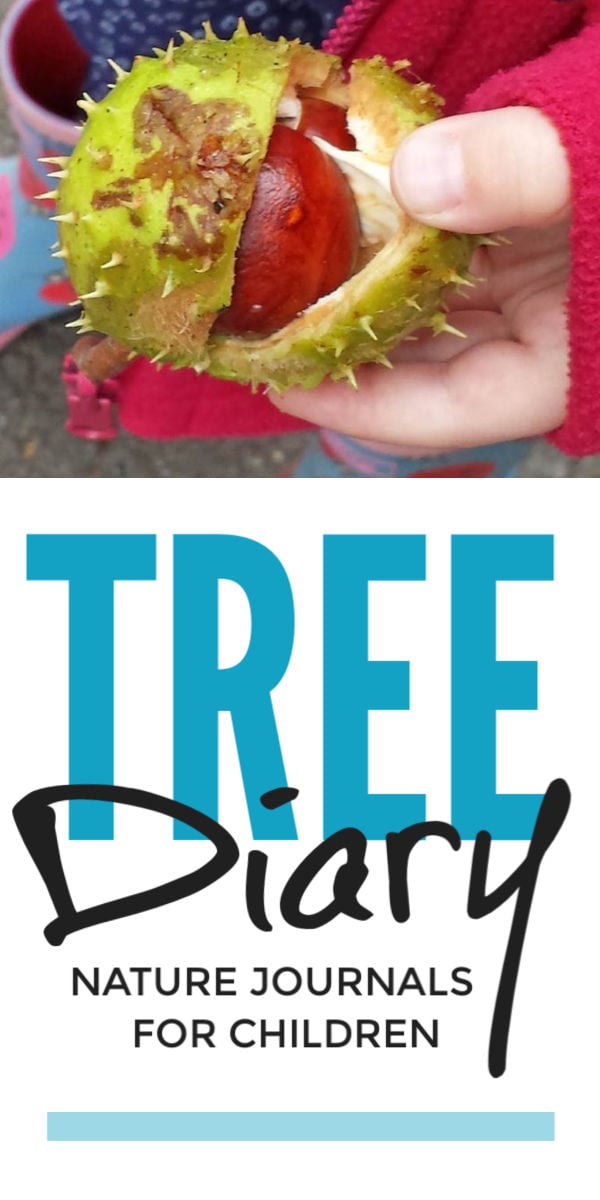
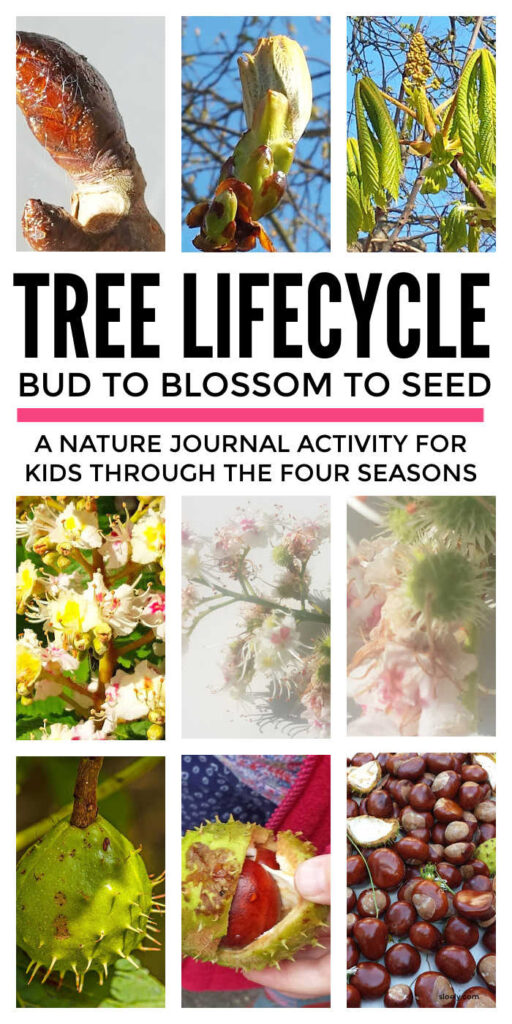


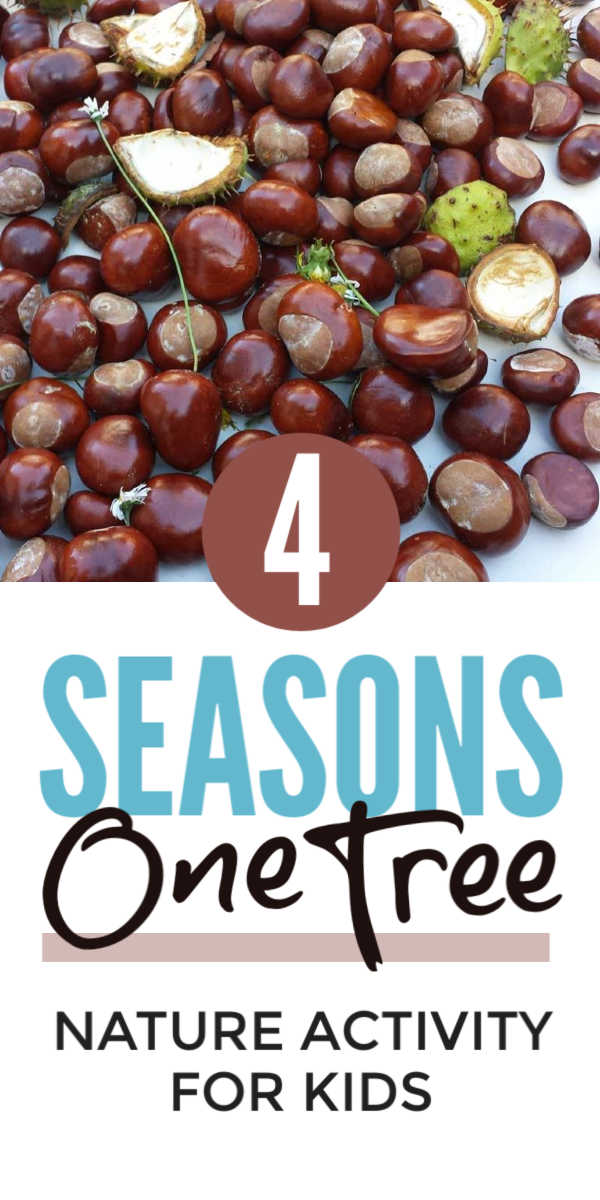
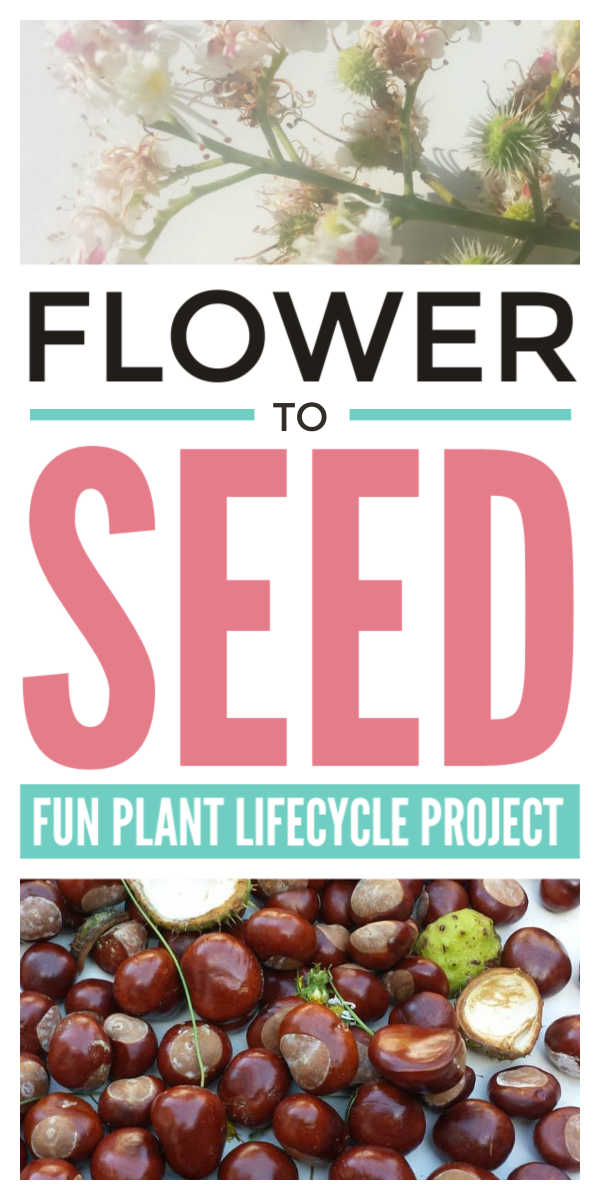
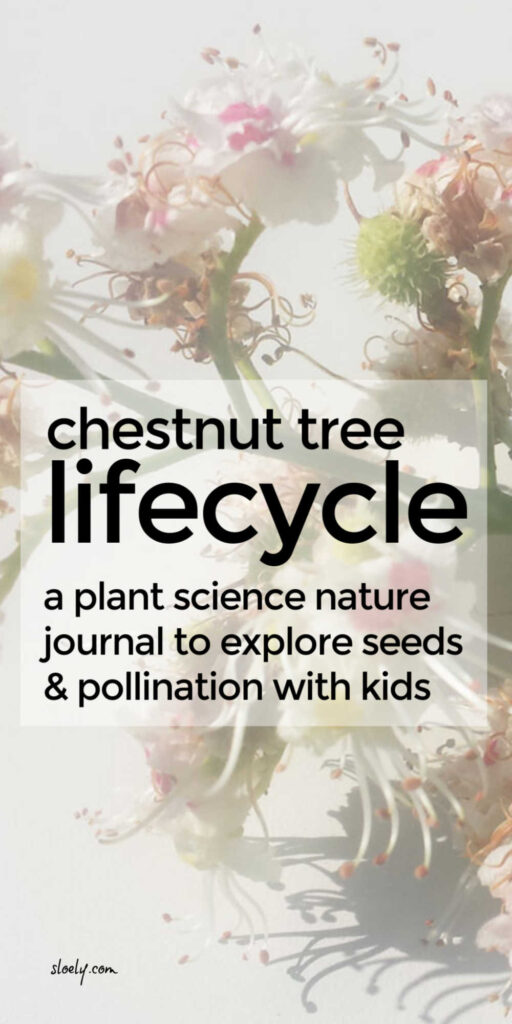
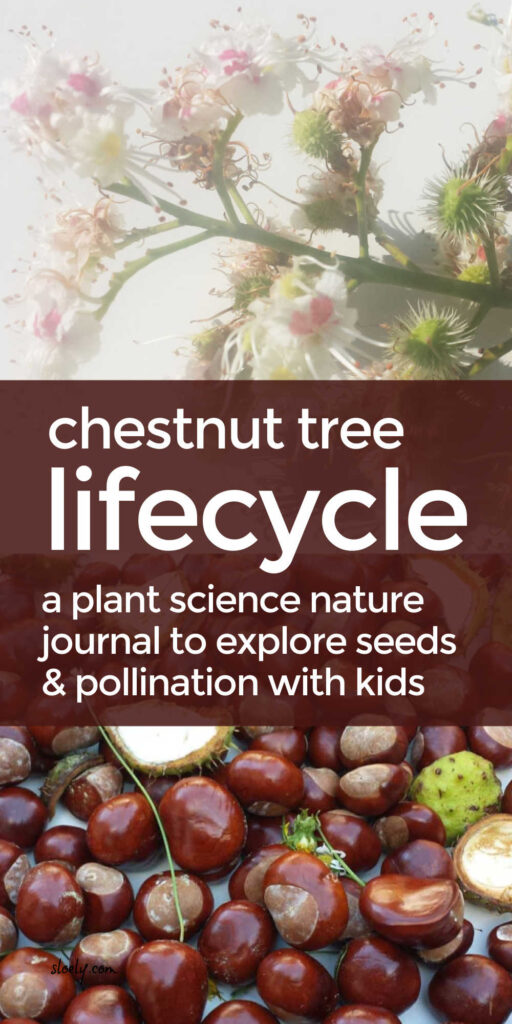
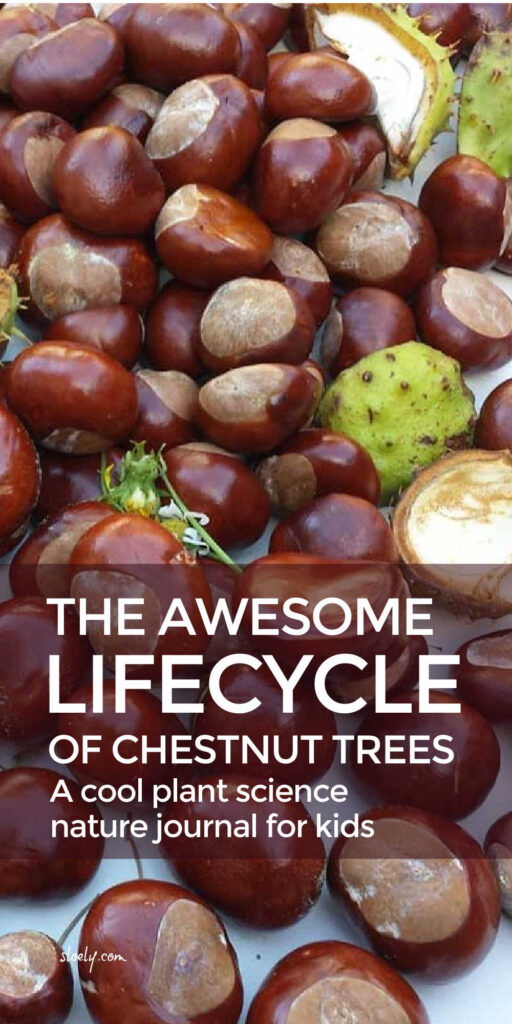




Leave a Reply